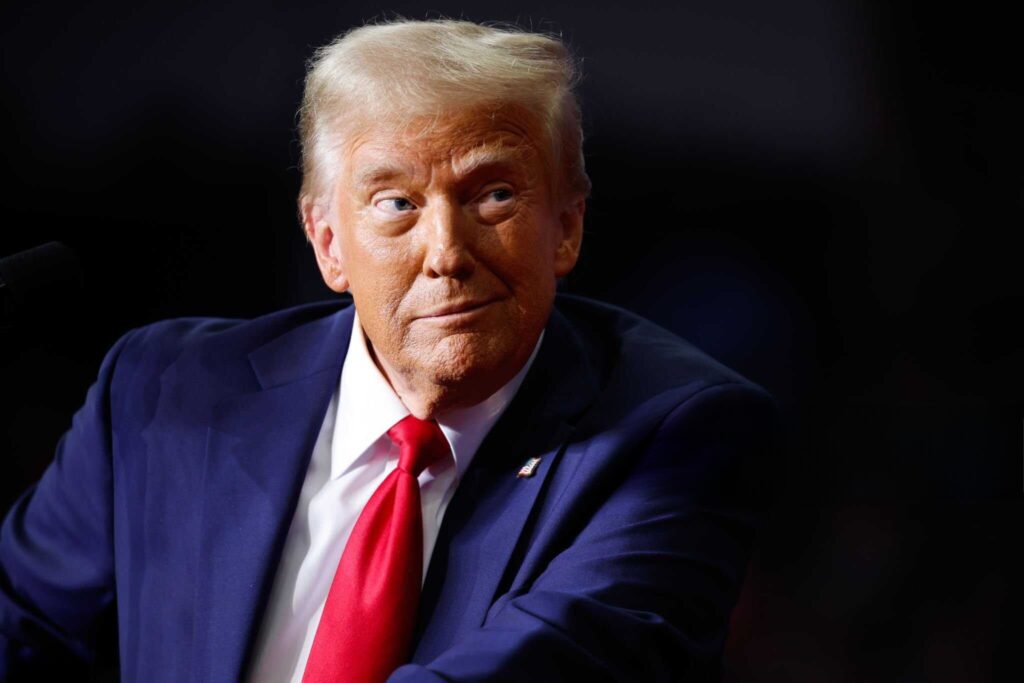President Donald Trump’s plan to impose broad reciprocal tariffs on imports could push U.S. inflation much higher, a new study suggests. If fully enforced, these tariffs might almost double inflation rates. This could add to the recent rise in consumer prices and hurt economic growth.
How Tariffs Could Affect Inflation
“This would be a real shock to the American economy,” said economist Gary Hufbauer from the Peterson Institute for International Economics. He warned that the U.S. could see “a considerable amount of inflation” if these tariffs take full effect.
Although this is a worst-case scenario, some of the effects could be reduced. The Trump administration has stated that these tariffs are mainly a negotiating tool. The goal is to pressure foreign countries into lowering their trade barriers against U.S. goods. A White House official explained that countries with the largest trade deficits with the U.S. will be targeted first.
Economists say that American retailers and manufacturers might absorb part of the costs instead of passing them on to consumers. However, the main aim of the tariffs is to match foreign taxes and subsidies. Even if partially implemented, they could still raise consumer prices, especially since they would be added to other tariffs that Trump has already announced.
“U.S. reciprocal tariffs will be a major issue,” Capital Economics wrote in a note to clients.
What Are Reciprocal Tariffs?
The idea behind reciprocal tariffs is simple. The U.S. would charge the same taxes on imports as its trading partners charge on American goods. Many countries impose value-added taxes (VAT) that act like sales taxes. These VATs are often much higher than standard tariffs.
“Whatever another country charges, we’re charging them,” Trump said during a recent news conference.
Using VAT rates to set U.S. tariffs would be unusual. Normally, VATs apply to both local and imported goods in the same country. The U.S. does not have a national VAT, relying instead on state sales taxes. These sales taxes do not apply to imports, making the U.S. system different from most countries.
Reciprocal tariffs could also be used to counter foreign subsidies and regulations that harm U.S. exports. However, it remains unclear how the U.S. would calculate these costs and include them in tariffs, said Deutsche Bank economist Justin Weidner.
The White House has directed U.S. trade officials to review unfair trade practices and submit a report in six months. This report will outline potential remedies and their economic impact.
Countries That Impose High Tariffs on U.S. Goods
Many countries charge higher tariffs on U.S. goods than the U.S. does on their products. For example:
- The European Union charges a 10% tariff on imported cars, while the U.S. applies only 2.5%.
- India imposes a 100% tariff on U.S. motorcycles, compared to the U.S. rate of 2.4% on Indian motorcycles.
- Brazil sets an 18% tariff on U.S. ethanol imports, while the U.S. imposes just 2.5% on Brazilian ethanol.
According to the White House, the U.S. goods trade deficit exceeded $1 trillion last year. The 15 largest U.S. trading partners impose an average trade-weighted tariff of 6.7%, while the U.S. applies just 2.6%. Including VATs, U.S. imports face total tariffs of 29% from India, 28% from Brazil, 25% from the EU, 23% from Mexico, and 19% from Canada.
How Tariffs Could Impact Inflation
Economist Paul Ashworth from Capital Economics estimates that the average tariff on U.S. imports would rise from under 3% to about 20%. This could add about two percentage points to inflation. In December, inflation stood at 2.6%, based on the Federal Reserve’s preferred measure.
Deutsche Bank’s Weidner predicts that businesses would pass about half of these higher costs onto consumers. The rest would be absorbed by companies. Even so, inflation could rise to 3.6% per year.
Federal Reserve’s Concerns
Inflation has dropped from a 40-year high of 7.2% in mid-2022 as supply chain disruptions eased. But it is still elevated, and the Federal Reserve has paused interest rate cuts. If tariffs push inflation higher, the Fed might keep interest rates high for longer.
Reciprocal tariffs would make it harder for U.S. businesses to adjust. With other tariffs, companies can shift imports away from heavily taxed countries. For example, they have moved some sourcing from China to other Asian nations. But if tariffs apply to all countries, avoiding them would be much harder.
Another issue is how to calculate tariffs for thousands of products across nearly 200 countries. “That would be extremely complicated,” Hufbauer said. One alternative would be to impose a tariff based on a country’s average rate on U.S. goods. Goldman Sachs argues that this would simplify the process and reduce overall costs.
Trump’s Broader Tariff Plans
Reciprocal tariffs are just one part of Trump’s larger trade strategy. He has already imposed a 10% tariff on China and a 25% duty on steel and aluminum imports. He also announced 25% tariffs on imports from Canada and Mexico, though these were delayed until early March to allow trade talks.
If these tariffs take effect, Weidner estimates they could add over a percentage point to inflation.
Many economists believe that tariffs create a one-time jump in prices. After that, inflation could return to its previous downward trend. But if companies raise prices in advance and workers demand higher wages, inflation expectations could rise.
Ashworth, however, suggests that tariffs might not slow economic growth much. He believes their impact could be offset by tax cuts Trump introduced earlier in his administration.
Trump’s tariff plan could raise U.S. inflation significantly. While the policy aims to reduce trade imbalances, it might also increase costs for businesses and consumers. The Federal Reserve and economists will watch closely to see how these tariffs affect prices and the economy.
As the debate over tariffs continues, their long-term impact remains uncertain. Businesses, policymakers, and consumers must prepare for potential changes in trade rules and prices. To stay updated on this issue, visit Financial Mirror.
